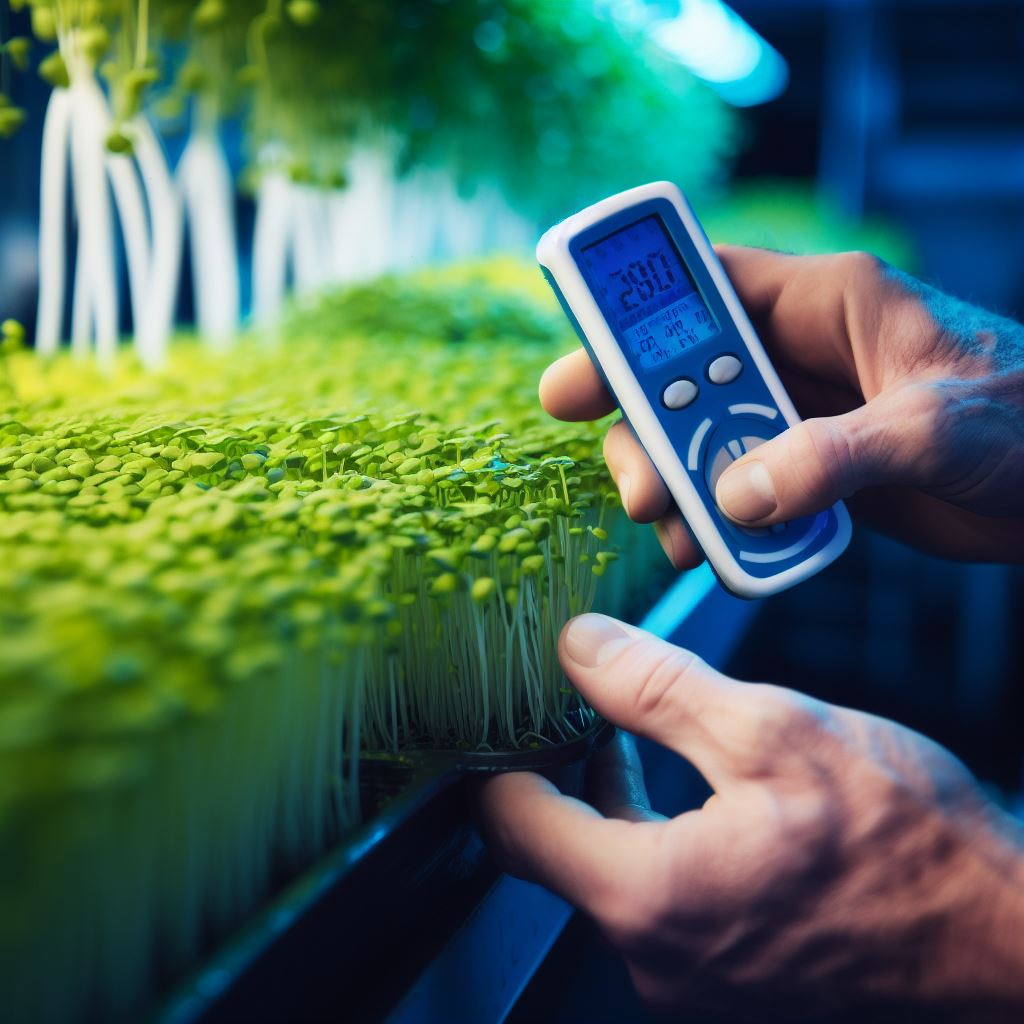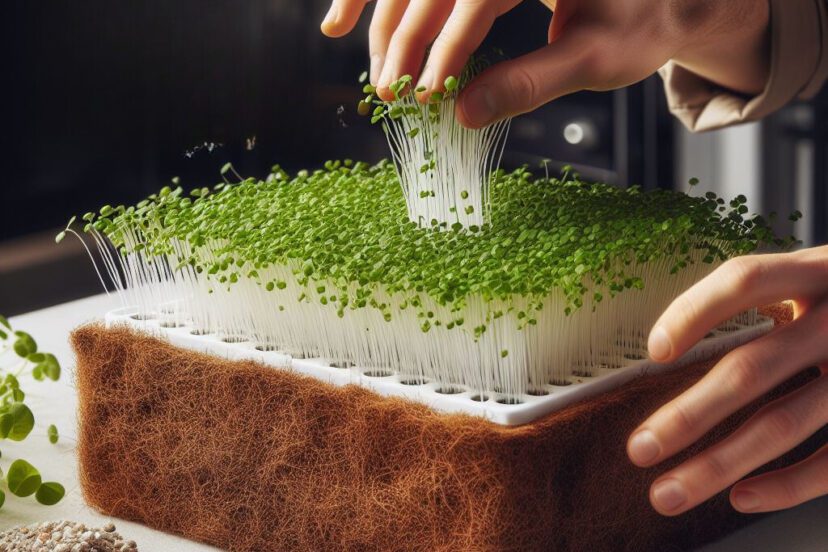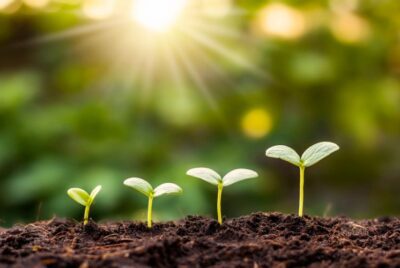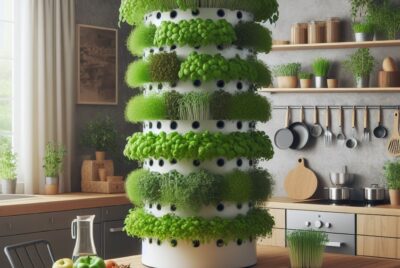Mastering Soilless Mixes for Hydroponic Microgreen Systems
Introduction
Embarking on the journey of soilless microgreen growing opens the door to a fascinating world of controlled cultivation. As an enthusiast in hydroponics, the passion for exploring the nuances of soilless systems grows with each vibrant microgreen harvested. Let’s dive into the intricacies of soilless mixes for hydroponic microgreens exploring their advantages and providing practical recommendations to elevate your hydroponic microgreen cultivation.
Advantages of Soilless Systems
Increased Nutrient Control
Soilless microgreen growing empowers cultivators with unparalleled control over nutrient levels. In traditional soil-based systems, nutrient variations can lead to unpredictable growth patterns. In a soilless setup, precision reigns supreme; you have the ability to fine-tune the nutrient solution, ensuring your microgreens receive an exquisite blend for optimal development.
Improved Water Efficiency
In the realm of water efficiency, soilless systems reign supreme. Hydroponics, by design, maximizes water usage, delivering nutrients directly to the roots. This not only minimizes water waste but also establishes a sustainable approach to microgreen production, a crucial factor in resource-conscious cultivation.
Disease Prevention
One of the standout benefits of soilless microgreen growing is the significant reduction in disease risk. Traditional soil can harbor pathogens detrimental to plant health. The absence of soil in a hydroponic environment creates a pristine, disease-free space, contributing to the robust health of your microgreens.
Space Optimization
For those navigating the constraints of urban spaces, soilless microgreen systems offer a transformative solution. The absence of soil opens avenues for vertical farming and other space-efficient setups. This allows you to cultivate an abundance of microgreens, making the most of confined spaces and transforming any corner into a thriving garden.
Hydroponic Substrate Options
Choosing the right substrate is a pivotal decision in the success of soilless microgreen cultivation. Here’s a closer look at popular hydroponic substrate options:
Coconut Coir
Derived from coconut husks, coconut coir is a favorite among hydroponic enthusiasts. Its ability to strike a balance between water retention and aeration creates an ideal environment for robust microgreen root systems.
Perlite
Perlite, a lightweight volcanic glass, earns its place in soilless mixes by enhancing aeration and drainage. This promotes optimal root development and prevents waterlogged conditions, fostering a healthy microgreen ecosystem.
Vermiculite
Vermiculite, a mineral with excellent moisture retention properties, complements other substrates in creating a well-balanced soilless mix. Its inclusion contributes to the overall health and vigor of microgreens.
Rockwool
Derived from basalt rock, rockwool stands out for its stability in pH and excellent water retention properties. It provides a secure foundation for microgreen roots, creating an environment conducive to thriving growth.
Best Soilless Medium for Microgreens
Selecting the ideal soilless medium involves careful consideration of various factors.
Criteria for Selecting the Right Medium
- Water Retention: Strive for a balance that keeps the soilless mix consistently moist without risking waterlogging.
- Aeration: Optimal aeration is key to providing microgreen roots with the necessary oxygen for healthy growth.
- Nutrient Content: Ensure the soilless mix maintains a neutral pH and is free from substances that could impede microgreen growth.
Recommended Mix Ratios
The magic of a balanced soilless mix often lies in the combination of coconut coir, perlite, and vermiculite. A proven ratio of 2:1:1 ensures the right equilibrium of water retention, aeration, and nutrient content for flourishing microgreens.
Soilless vs. Traditional Growing Media
Comparing soilless and traditional growing media unveils a host of benefits associated with soilless cultivation.
A Comparison of Benefits
- Precision in Nutrient Delivery: Soilless systems offer unparalleled control over nutrient delivery, allowing for the fine-tuning necessary for optimal microgreen growth.
- Reduced Disease Risk: The elimination of soil significantly lowers the risk of soil-borne diseases, contributing to the overall health and vitality of microgreens.
- Space Efficiency: Soilless setups, especially when designed for vertical farming, make efficient use of space—ideal for both urban and conventional gardening.
Environmental Impact
As sustainability takes center stage in agriculture, soilless mixes for hydroponic microgreen growing emerges as an environmentally friendly choice. Reduced water usage and the absence of soil-related pesticides align with the principles of eco-conscious cultivation.
Growing Microgreens Without Soil
Benefits and Challenges
The decision to grow microgreens without soil brings forth a plethora of advantages, accompanied by a unique set of challenges.
- Benefits: Enhanced nutrient absorption, accelerated growth, and simplified nutrient management are hallmarks of soilless microgreen cultivation.
- Challenges: Providing adequate support for delicate roots, fine-tuning nutrient solutions, and preventing waterborne diseases become crucial considerations.
Methods and Techniques
Hydroponic systems like nutrient film technique (NFT) and deep water culture (DWC) serve as effective methods for growing microgreens without soil. These systems ensure a continuous flow of nutrients to the roots, creating optimal conditions for microgreen development.
Recipe for an Effective Soilless Mix
Creating the perfect soilless mix is akin to composing a symphony for your microgreens—a harmonious blend that sets the stage for optimal growth and nutrient absorption. Let’s delve into the details of crafting an effective soilless mix that will be the secret sauce for your hydroponic microgreen success.

Ingredients
- Coconut Coir
Coconut coir, derived from the fibrous husks of coconuts, serves as the foundational component in your soilless mix. Its excellent water retention properties create a moisture reservoir, ensuring a consistent supply for your microgreens. The fibrous structure also provides aeration, preventing compaction and supporting healthy root development. - Perlite
A key player in soilless mixes, perlite, a lightweight volcanic glass, contributes to aeration and drainage. Its porous nature allows for ample oxygen exchange within the root zone, promoting robust growth. Perlite also prevents compaction, creating an environment where microgreen roots can thrive. - Vermiculite
Vermiculite, a mineral known for its ability to expand when heated, complements the mix by enhancing moisture retention. This ensures a stable water supply, crucial for the uptake of nutrients by microgreen roots. The unique properties of vermiculite provide a cushioning effect for delicate roots, fostering a favorable environment for growth. - Controlled-release Fertilizer
Introducing a controlled-release fertilizer into your soilless mix is the final touch to fortify it with essential nutrients. This slow-release formulation ensures a steady supply of nutrients over an extended period, aligning with the dynamic growth phases of microgreens. Choose a fertilizer with a balanced NPK ratio, along with essential micronutrients, for comprehensive nutrition.
Mixing Instructions
- Combine in Ratio (2:1:1): Begin by blending coconut coir, perlite, and vermiculite in a ratio of 2 parts coconut coir to 1 part each of perlite and vermiculite. This balanced composition strikes the perfect equilibrium between water retention, aeration, and nutrient availability.
- Thoroughly Mix Components: Thoroughness is key. Ensure an even distribution of the components throughout the mix. A well-mixed substrate guarantees that each microgreen seedling has consistent access to the essential elements required for healthy development.
- Add Controlled-release Fertilizer: Once the physical components are blended, introduce the controlled-release fertilizer into the mix. Follow the manufacturer’s instructions for the appropriate quantity based on the volume of your substrate. This step is crucial for fortifying the soilless mix with a comprehensive suite of nutrients.
- Adjust pH Level (Optional): Depending on the pH requirements of your microgreens, consider adjusting the pH of the soilless mix. While many microgreens thrive in a slightly acidic to neutral pH range (around 6.0), verify the specific preferences of your chosen microgreen varieties and make adjustments accordingly.
Crafting an effective soilless mix is a personalized journey. Consider the unique needs of your microgreens and adapt the recipe to suit specific varieties or growth stages. Remember, the art of hydroponic microgreen cultivation lies not just in the ingredients but in the synergy created by the right blend. Experimentation and observation will be your guides as you fine-tune your soilless mix to perfection.
Tips for Successful Soilless Microgreen Growing
Proper Watering Techniques
In the realm of soilless mixes for hydroponic microgreen growing, overwatering can be a stumbling block. Exercise moderation, ensuring that the soilless mix remains consistently moist without crossing into waterlogged territory. Employing an automated irrigation system with a timer can be instrumental in maintaining optimal moisture levels for your microgreens.
Monitoring pH Levels
Regular checks on the pH levels of both the nutrient solution and the soilless mix are essential. Microgreens thrive in a slightly acidic to neutral pH range. Adjustments can be made using pH-up or pH-down solutions, ensuring an environment where nutrients are readily available for absorption.

Light and Temperature Considerations
The placement of your hydroponic microgreen setup plays a pivotal role in their growth. Position it in an area that receives ample natural light or supplement with artificial lighting. Microgreens typically require 12-16 hours of light per day for optimal growth. Additionally, maintaining a consistent temperature between 70-75°F (21-24°C) fosters ideal conditions for microgreen development.
Troubleshooting Common Issues
Nutrient Deficiencies
Recognizing and addressing nutrient deficiencies is paramount for successful soilless microgreen growing. Regularly inspect leaves for discoloration or stunted growth, adjusting the nutrient solution accordingly. Common deficiencies include nitrogen, phosphorus, and potassium, each requiring specific attention for optimal growth.
Pest Management
While soilless systems mitigate the risk of soil-borne pests, airborne pests can still pose a threat. Implement preventive measures such as introducing beneficial insects or utilizing organic pesticides to maintain a pest-free environment.
Sustainability in Soilless Mixes for Hydroponic Microgreen Growing
Eco-friendly Practices
- Recycling Substrates: Embrace eco-friendly practices by reusing coconut coir, perlite, and vermiculite. Sterilize these components between crops to eliminate potential pathogens, reducing waste and costs.
- Water Recycling: Implement systems that collect and filter runoff water for reuse. This sustainable approach minimizes water consumption, aligning with environmentally conscious farming practices.
Recycling and Reusing Substrates
In the pursuit of sustainability, consider recycling and reusing substrates. After harvesting microgreens, sterilize the soilless mix components to eliminate potential pathogens, making them ready for the next planting cycle. This cyclical approach minimizes waste and supports a sustainable microgreen cultivation process.
The Future of Soilless Microgreen Growing
Technological Advances
As technology continues to advance, soilless microgreen systems are poised to benefit from innovations. Automated nutrient monitoring, precision irrigation systems, and controlled environment agriculture (CEA) technologies are on the horizon, promising even more efficient and streamlined microgreen cultivation.
Research and Development
The ongoing research in the field of hydroponics is expanding our understanding of plant nutrition and growth dynamics. Expect continuous improvements in soilless media formulations, leading to more efficient and sustainable microgreen cultivation practices. As we delve deeper into the intricacies of soilless microgreen growing, the future holds exciting possibilities for enhanced efficiency and productivity.
Conclusion
In mastering the soilless mixes for hydroponic microgreen systems, you embark on a journey of innovation and sustainability. The advantages of soilless microgreen growing extend beyond the present, shaping the future of agriculture. As you experiment with different substrates and techniques, remember that each harvest is a testament to your commitment to efficient, controlled, and sustainable cultivation. Whether you’re an urban gardener or a commercial grower, the future of microgreen cultivation lies in the hands of those willing to explore, adapt, and innovate. Happy growing!
Frequently Asked Questions (FAQs)
What are the key benefits of soilless microgreen growing?
Soilless microgreen growing offers precise nutrient control, improved water efficiency, disease prevention, and optimal space utilization, making it an efficient and sustainable method for cultivating nutrient-packed greens.
How do I choose the right hydroponic substrate for my microgreens?
When selecting a hydroponic substrate, consider factors such as water retention, aeration, and nutrient content. Popular choices include coconut coir, perlite, vermiculite, and rockwool, each offering unique advantages for microgreen cultivation.
Can I use traditional soil for microgreens?
While traditional soil can be used for microgreens, soilless systems provide more control over nutrient levels, reduce disease risk, and optimize space usage. Soilless cultivation is particularly advantageous for those seeking precision in microgreen growing.
What are common challenges in soilless microgreen systems?
Common challenges in soilless microgreen systems include overwatering, pH imbalances, and the need for precise nutrient management. Vigilant monitoring and timely adjustments can effectively address these challenges, ensuring the health and vitality of your microgreens.
Are there any specific nutrients essential for soilless mixes for hydroponic microgreen cultivation?
Microgreens typically require nitrogen, phosphorus, potassium, and micronutrients for robust growth. Choosing a well-balanced nutrient solution and adjusting it as needed will support healthy microgreen development in a soilless environment.




